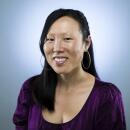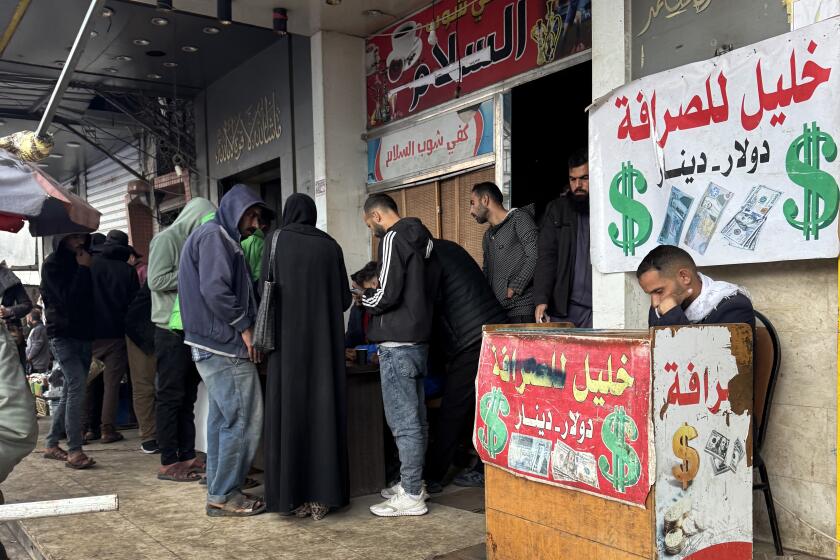A spicy turf battle in Koreatown
When Maminul Haque greets friends, he uses the Bangla “Kamon aachen!” When he is hungry, he drops by one of numerous Bangladeshi eateries for a plate of curry -- more spicy than the Indian version, devotees agree.
Although he is standing in the heart of Koreatown, he and many other Bangladeshi Americans say the name does not reflect all its inhabitants. Now, the community is seeking recognition of its own “Little Bangladesh” within the area west of downtown popularly known as Koreatown.
The proposal has angered longtime residents who have worked hard to promote the district as a Korean cultural destination and economic hub. City officials, meanwhile, worry that neither side is taking into account the full diversity of an area that is also home to many Latinos and Thai Americans, among others.
More than a name is at stake. Although largely symbolic, the recognition afforded by a special district designation can help establish a community within the cultural mosaic of Southern California, said Hamid Khan, executive director of the nonprofit South Asian Network. When noted on maps and street signs, it can also attract visitors and help local business.
When Margaret Ko moved to Los Angeles from Korea more than 30 years ago, Koreatown was not the mass of restaurants, stores and yogurt shops it is today. Over the years, the 65-year-old has proudly watched the community -- and its stature -- grow.
“It means power,” she said as she hemmed a pair of pants inside the dry cleaners where she’s worked for a decade. “Koreatown is already established. . . . Why can’t they find another place?”
Next door at Meghna grocery, Mohammad Islam rang up orders of piping hot chicken and goat curry. The store is a gathering place for Bangladeshi immigrants who come to socialize, read a newspaper written in Bangla or watch soap operas filmed in their homeland. Islam, 26, said that although his family’s business is flanked by Korean-owned stores, it would be nice if the Bangladeshi community was recognized.
“Most people don’t know who we are, they know us as Indians,” he said. “Maybe people should try to share a little bit.”
In the ever-shifting Southern California ethnic landscape, turf tussles are not uncommon as new populations move into areas of long-settled residents.
Central Americans in the Pico-Union district and Japanese Americans in Little Tokyo have nervously monitored the expansion of Korean businesses and residents into their ethnic enclaves. In Artesia, some residents opposed proposals to designate Pioneer Boulevard as Little India because of the city’s diverse ethnic makeup.
And a decade ago, the Thai community won a city designation of Thai Town along Hollywood Boulevard between Normandie and Western avenues -- only to see their district encircled soon after by Little Armenia.
Immigrants from the South Asian nation now known as Bangladesh have been moving to Los Angeles since at least the 1960s, driven by poverty and natural disasters. For many of them, Koreatown is the first port of call due to the neighborhood’s low rent, cultural familiarity and business opportunities, Haque said.
Although the 2000 census counted just 157 Bangladeshis in Koreatown, a survey conducted five years later by the South Asian Network and the UCLA School of Public Policy and Social Research suggested a population of 6,000 to 8,000, Khan said.
Since then, the Bangladeshi American community says that its numbers have swelled to more than 10,000. Last year, proponents filed a petition with the city to designate the area from Third Street to Wilshire Boulevard and Vermont Avenue to Western Avenue as “Little Bangladesh.”
The proposal would have taken out the heart of what most Angelenos think of as Koreatown, said Grace Yoo, executive director of the Korean American Coalition’s Los Angeles chapter.
“There’s so much in a name,” she said. “This is where I get food I’m familiar with. It’s where I come for ingredients that aren’t available elsewhere. It’s where I’ve been meeting up with my friends for decades. It’s a piece of your own history. For someone else to come in and say sorry that’s not it, really causes people to get heated.”
Although the city never formally defined the neighborhood, Koreatown has been identified on maps since the 1980s. In February, members of the Korean American community filed their own petition asking the city to recognize Koreatown as the area from Melrose Avenue and Beverly Boulevard to the north; Pico and Olympic boulevards to the south; Vermont Avenue and Hoover Street to the east; and Wilton Place and Crenshaw Boulevard to the west.
After a series of meetings in December and January, Korean American representatives offered to recognize a much smaller section along Koreatown’s eastern boundary as “Little Bangladesh.” But Muhammad Hussain, a spokesman for the “Little Bangladesh” campaign, complained that there were very few Bangladeshis living in the proposed area.
City Councilman Ed Reyes, whose district includes Koreatown, said his priority was to find a solution that recognizes the full range of ethnic and cultural communities that make up the area.
“The issue here is how do we achieve the acknowledgment [Bangladeshi Americans] are seeking without having to shut anyone out,” he said.
Many in the neighborhood would agree.
“Koreatown or Bangladeshtown -- it doesn’t matter,” said Kevin Lee, 34, owner of L.A. Korean Express, a mail service and supply shop that has many faithful Bangladeshi customers.
Nazmul Chowdhury, 43, serves a steady stream of Koreans at his Bangladeshi grocery, Deshi Food.
“That’s the beauty of America,” he said. “It’s multicultural.”
--
Times staff writer Teresa Watanabe contributed to this report.
More to Read
Sign up for Essential California
The most important California stories and recommendations in your inbox every morning.
You may occasionally receive promotional content from the Los Angeles Times.











